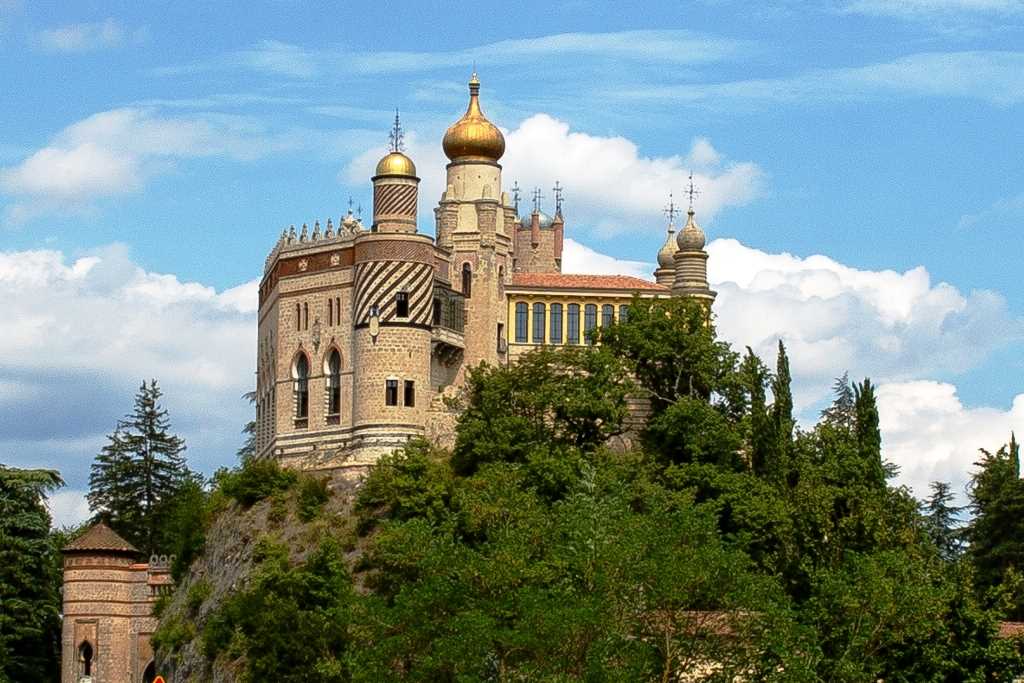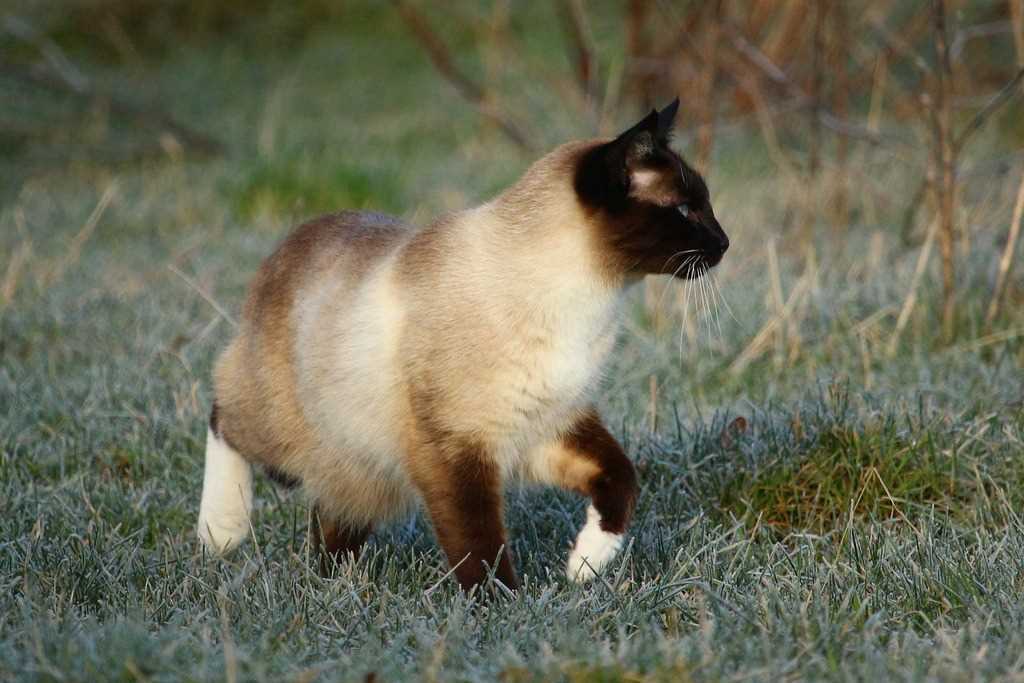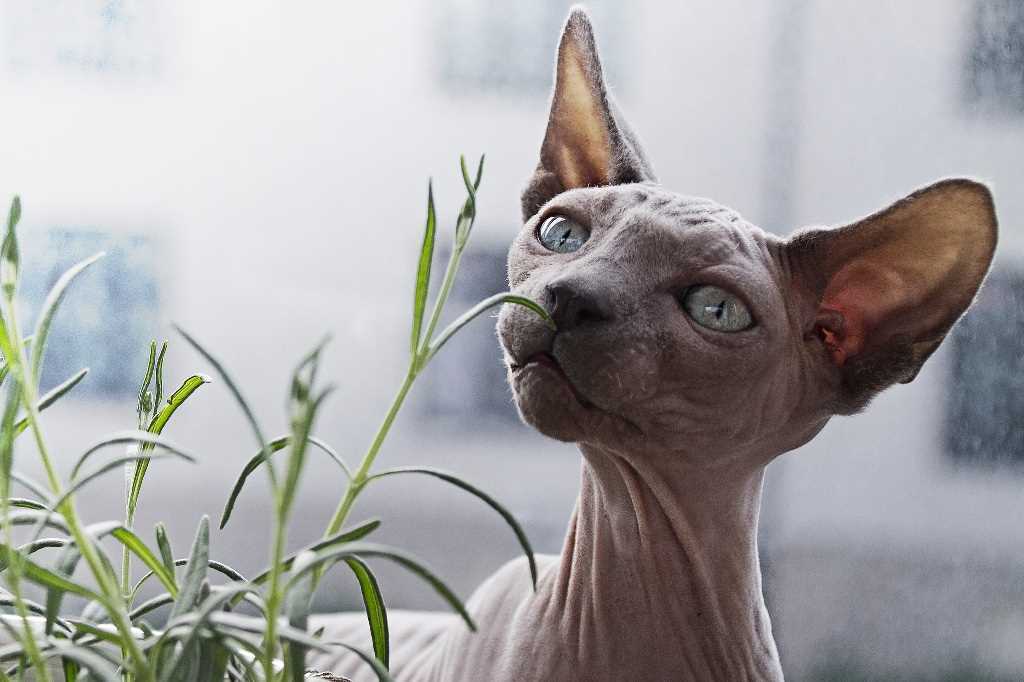The most fascinating and bizarre castle in Italy is Rocchetta Mattei. It is located in the heart of the Tuscan-Emilian Apennines. Travelling along the state road called the Porrettana, which ends up near Bologna, at a certain point you find yourself in front of a sight that you certainly don’t expect. At the centre of a small valley, on a small hill, there is a castle that as soon as you see it seems to have come straight out of a fairy tale.
It is a nineteenth-century castle that weaves together many different styles, from medieval to Moorish, with an infinity of towers, large and small, all different, stained glass, Arabian-style windows, multicoloured spires and golden domes. Whichever way you look at it, it is always different and seems like not one but a hundred castles.
Fortunately, it is now possible to visit this marvel, which has been restored (still not completely, unfortunately), leaving the original features intact, and it is a visit I highly recommend. You will be amazed by the labyrinth of rooms, one more colourful than the other, towers and stairways, passageways outside and the beautiful church which was designed on the model of Cordoba Cathedral in Spain. There is even an inner courtyard, called the Lion Courtyard, which mimics the courtyard of the Alhambra in Granada.
A bit of history
This castle was desired and conceived by Count Cesare Mattei, who started building it in 1850 on the ruins of another castle, the ancient fortress of Savignano dating back to the 13th century. The structure of the castle has been modified several times, both by Count Mattei during his life and by his heirs.
But who was this character who wanted and personally presided over the work on this bizarre building? Cesare Mattei was born in Bologna into a wealthy family and pursued a political career. He was also one of the founders of the Cassa di Risparmio in Bologna. He was made a count by Pope Pius IX for donating land in the Comacchio area that would have helped the Papal State stop the Austrian advance.
The turning point in his life came when his mother died after years of unspeakable suffering from cancer. After this, he left politics to dedicate himself to the study of medicine and retired to the Vigorso estate to study new treatments that would be more effective in illnesses such as his mother’s. In 1850, he bought the land where he had been living for many years.
In 1850 he bought the land where the ancient fortress of Savignano stood and in November of the same year began work on the castle he was to call Rocchetta, where he settled in 1859. The castle was an open building site throughout his life and beyond as some of the work was completed by his adopted son and heir Mario Venturoli.
Going beyond the theories of the founder of homeopathy, he developed a new medical therapy that he called electro-homeopathy, which made him famous throughout the world, so much so that it is still practised in some countries such as India and Pakistan. Among his patients were celebrities such as Tsars and Princes. He was even mentioned by Dostoevsky in his novel The Brothers Karamazov. He was also a philanthropist as he treated free of charge all those who came to him and could not afford the cost of his medicine, even housing them at his own expense.
He died in 1896 at the age of 87, and in 1906, as expressly requested in the count’s will, his body was buried in the chapel of the Rocchetta church, where it rests to this day.
Until 1959, the heirs continued the production and distribution of the “Mattei remedies”, but afterwards, for various reasons, the laboratories were closed and the castle was unfortunately left to itself after it suffered a great deal of damage and looting during the Second World War. It was possible to visit it until the mid-1980s, after which, having become dangerous due to a very rapid decline caused by the abandonment of its owners, it was closed to the public.
Towards the end of the 1990s, the local population, tired of seeing the castle in such a state of disrepair, created the “S.O.S. Rocchetta” committee, which set itself the goal of saving it. This struggle lasted about 8 years and during this time major repairs were carried out. The committee also began to try to recover artefacts and documents that had been lost over the years, and in 2000 an archive was established to store the recovered material.
Finally, in 2005 the Rocchetta was acquired by the Fondazione Cassa Di Risparmio in Bologna and in 2007 the restoration work began. On 9 August 2015 the castle was finally opened to the public. A good part of the castle can be visited, but the medieval part is still missing, which hopefully we will be able to see soon, as the works are going on.
Inside the castle
The styles that can be found inside the castle are innumerable, ranging from medieval, neo-gothic, Moorish to Art Nouveau. An important staircase leads to the inner courtyard, and even here, before entering, there is a bizarre mixture of styles, a Moorish arch and statues of putti, busts and winged horses at the bottom. From the courtyard, stairs lead to the various areas of the castle.
There are fantastic rooms in terms of colour, finish and upholstery. Wood was a widely used material and we find it in the staircases, ceilings and in many really fine finishes. The large halls, like the small rooms on the towers, have been restored with tapestries, floors, stained-glass windows, and finishes that reflect the style of each room, so much so that we think only the furniture is missing and then it could be inhabited again. And the view from every tower and window is marvellous and restful, so surrounded by greenery.
Visits to the castle are guided and the guides will tell you the story of both Cesare Mattei and the various rooms they take you to see. I was impressed by the Hall of 90, which is wonderful, named after the fact that the Count wanted to celebrate his 90th birthday here together with 90 other 90-year-olds. Unfortunately for him, he was unable to make the appointment as he died at the age of 87.
And this journey through alchemy and esotericism, where every room, every statue, every arch, has its own message, is really interesting. For example, they tell us of two heads hanging on a wall in the orange corridor leading to the central courtyard. The first is that of a goat and the other is that of a bearded old man. They represent the ascent between ignorance and wisdom on the steps up to the castle.
But there are many more stories and anecdotes that are told in each room, such as the Hall of Peace, the Hall of Oblivion and the Hall of Music. The Noble Staircase, which you descend to leave the castle at the end of the visit, is also very beautiful. It is a visit you will want to do again, because you will be left with the feeling of peace you get when you walk along this wonderful route through a fairy tale.
Here you can find the official website https://www.rocchetta-mattei.it/ to ask for information about opening days and hours. Subject to the current situation.


